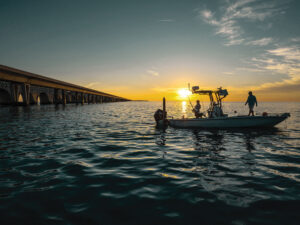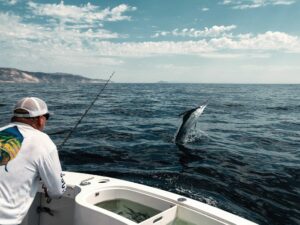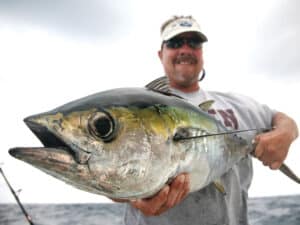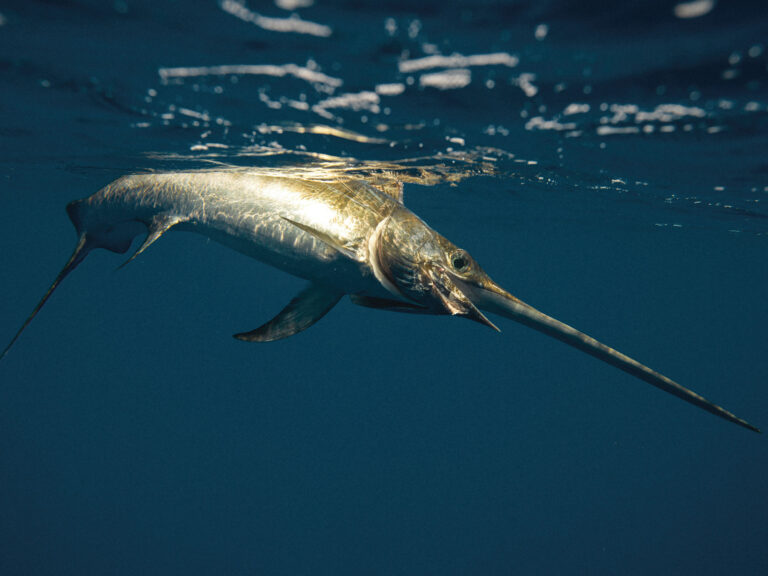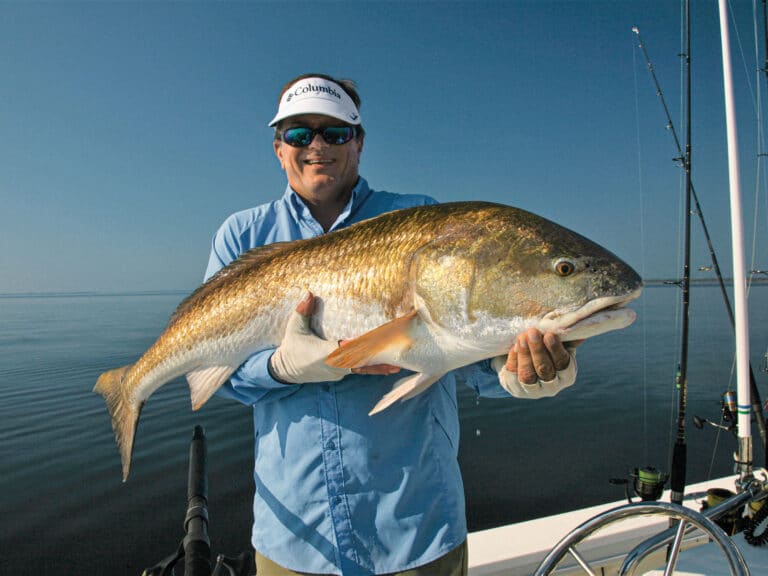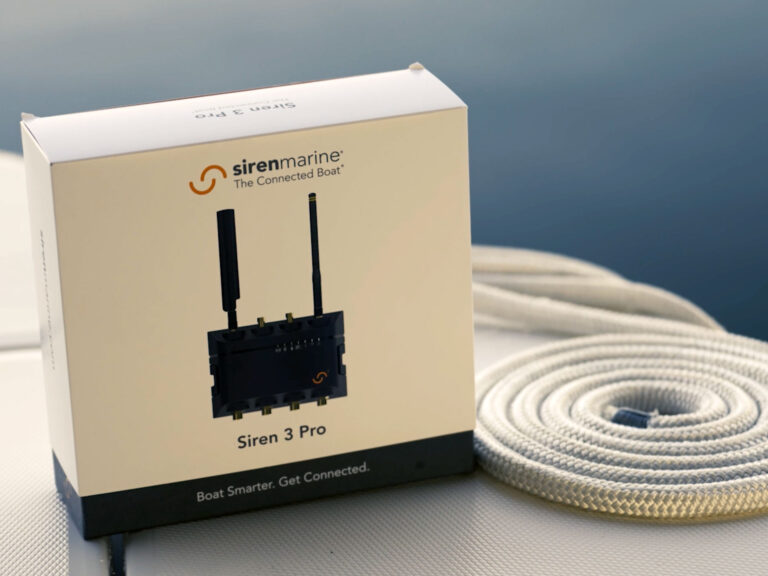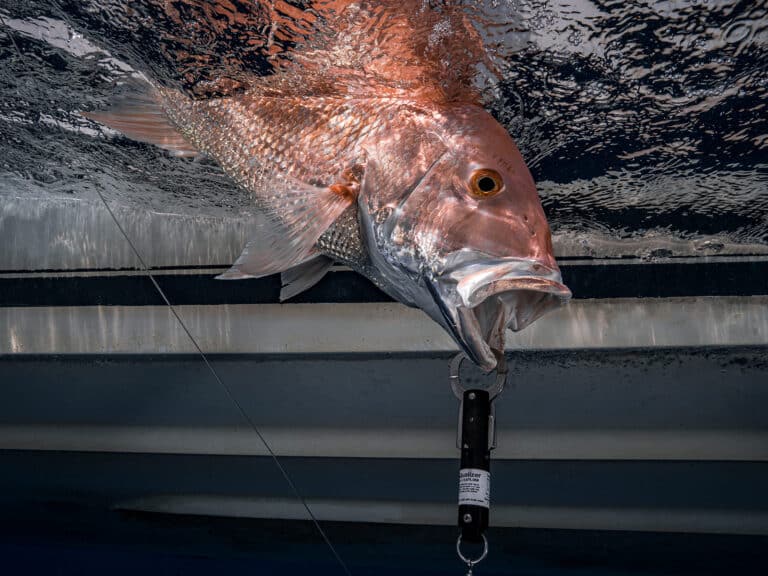“This might be the most popular inshore fishing spot in the world,” says Aaron Benzrihem. He and Rich Janitschek are stocking up on tackle in Islamorada in the Florida Keys. “There’s just a world of endless possibilities down here,” he continues as he sorts through packages of jig heads and soft plastics. “It’s gonna be freakin’ awesome!”
Benzrihem and Janitschek are two normal guys who love to fish so much that they’ve made filming their adventures a career. Both live in southeastern Florida. They shoot authentic, unscripted material, so Salt Water Sportsman decided to send them south in December to see what it’s like to trailer a boat down the Overseas Highway.

We gave them three things for this trip: a boat, four nights in an Airbnb, and $300 to spend on bait and tackle. The boat was a skiff, an 18-foot Mako, but it was rigged bare bones—no trolling motor, no poling platform, just a basic ride with a reliable engine and a dependable fish finder. Were they up to the task? Could they find fish?
The game plan was simple. We’d rent them a place on Big Pine Key, and they’d fish for roughly 72 hours. They’d target the flats, canals and bridges you can access from public ramps along the Overseas Highway. This 113-mile ribbon of asphalt and pylons was built out of repurposed sections of Henry Flagler’s old Florida East Coast Railway. Completed in 1938, the highway provided a lifeline for the isolated residents of the Keys and a gateway to the region’s incredible fishing—one that anyone with a truck, boat and trailer can experience for themselves.
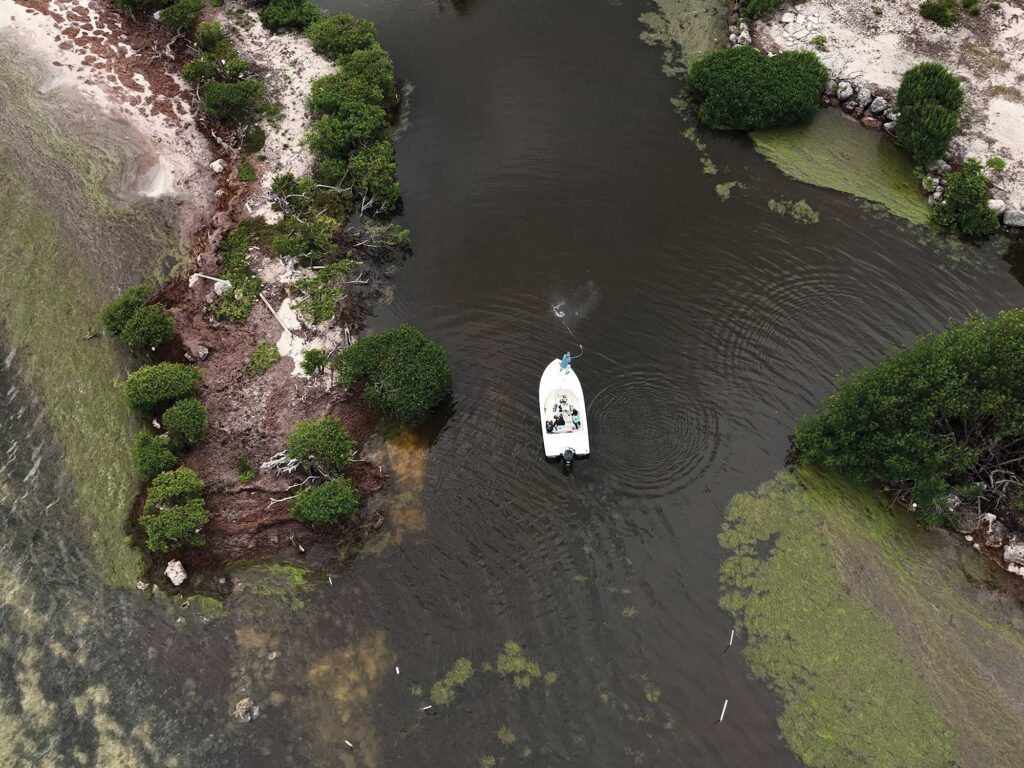
Canal Tarpon
As the Overseas Highway was being constructed, engineers and developers created a network of canals to crisscross the islands. That allowed for the development of waterfront communities and tourism infrastructure. These man-made channels now cut through most islands in the Keys, and while many of them are silted in, some offer great habitat for juvenile tarpon.
For anglers not familiar with Keys waters, tarpon are a reliable target for inshore action. The small ones are tremendously fun on light tackle, and they’ll often be found mixed in with bigger fish. Those larger fish are a blast for the few seconds you can keep them hooked with undergunned tackle.
Benzrihem has a lot of respect for these prehistoric fish. “Whenever you catch a really big tarpon and get it boatside, it’ll look directly at you during the release—it’s like they know what’s going on,” he says. “Tarpon are smarter than other fish, in my opinion. Not smarter in the sense of harder to catch, just more aware of their surroundings.”
The little guys, though, can be pretty easy to fool. The first canal Janitschek and Benzrihem hit is choked with grass blown in from the flats. But there is open water inside the creek, and Benzrihem hooks up on his first cast. A ⅛-ounce Vudu Shrimp is the bait of choice.
“Shrimp jigs catch everything,” says Benzrihem. “They’re a great artificial lure to cover ground and gauge what’s down there. They’re not the biggest presentation, and they’re harder to get bigger fish [hooked solidly], but they’re a great lure to start with.”
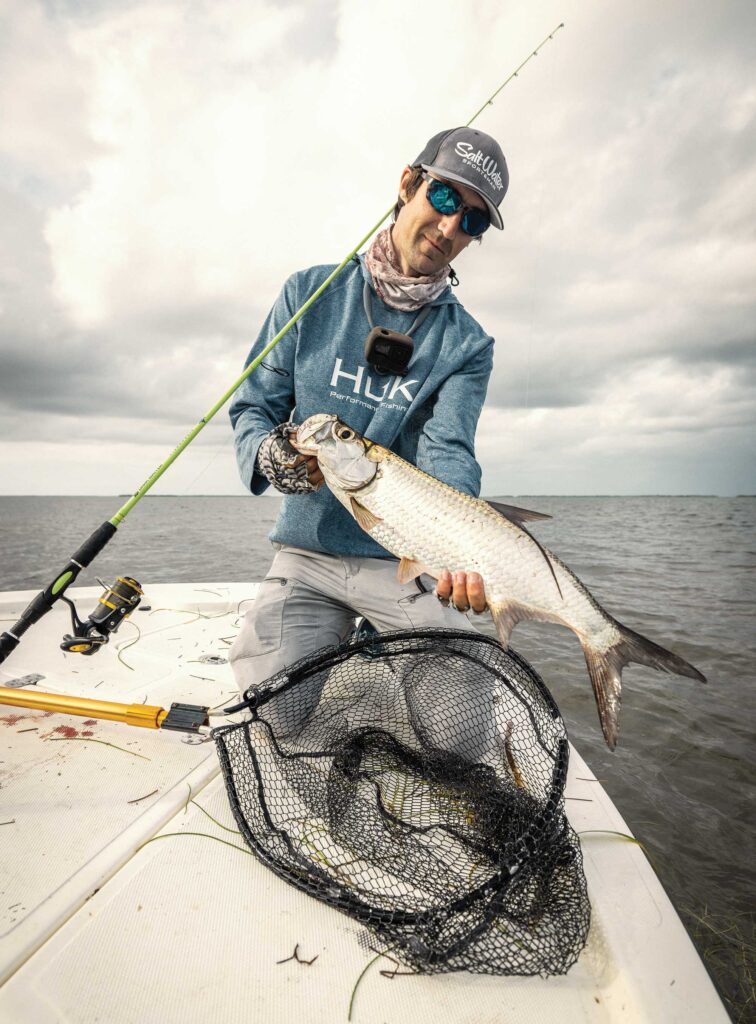
He casts again, this time behind a dock piling near some nervous water. “The name of the game is pretty simple,” he explains. “Just pitch it up, let it sink. I use a double-snap jig technique with shrimp. Twitch, twitch, drop.” And just like that, another tarpon hits. The 25-incher jumps three times and walks him around the bow of the boat before he brings it to hand for release.
“When you’re fishing in current, sometimes you literally don’t even need to reel, besides keeping up with your slack,” he says. “The fish will pick it up as it’s floating down. You know, it’ll almost look like a lifeless shrimp, and once in a while just give it a twitch.”
After three to four fish each, the action slows, so the guys leave the canal to search the flats and mangroves on the backside of the island. They find a school of small barracudas. A bull shark attacks Benzrihem’s Spook. But the action is slow, and they head back to the mouth of the canal, playing catch-and-release for another hour during the sunset bite.
“Sometimes, when a bite dies down, all you have to do is just wait for the tide to switch, or let [the area] reset,” says Janitschek. “It can kick back up even better than it was before.”
Mixed Bag at the Bridge
“The good jig lane is in the channel, but the positioning of the boat keeps shifting,” Benzrihem says. “Now that we’re at an angle with these fenders, I’m scared to cast past them.”
The guys are anchored at the Seven Mile Bridge, a massive structure connecting Marathon and Little Duck Key. They’ve been catching fish here for a day and a half, a mix of yellow jacks, small snapper and grouper. But a hard wind and a light current now have them pinned behind the structure. Without a trolling motor to help them stay on target or drift bigger fish away from the bridge, they’re starting to run out of gear.
Benzrihem is using a small baitcaster rated for ⅜- to 1-ounce baits. “If we up our tackle, we’re not going to get bites; we’re not going to have the sensitivity we need to feel them,” he says. “It’s give and take. But man, we’re getting worked. If you get one and it cuts the corner? You have a 50-50 shot, and that shot is based on what the fish wants to do, not what you want to do.”
Read Next: The Florida Keys Are Sportfishing Paradise
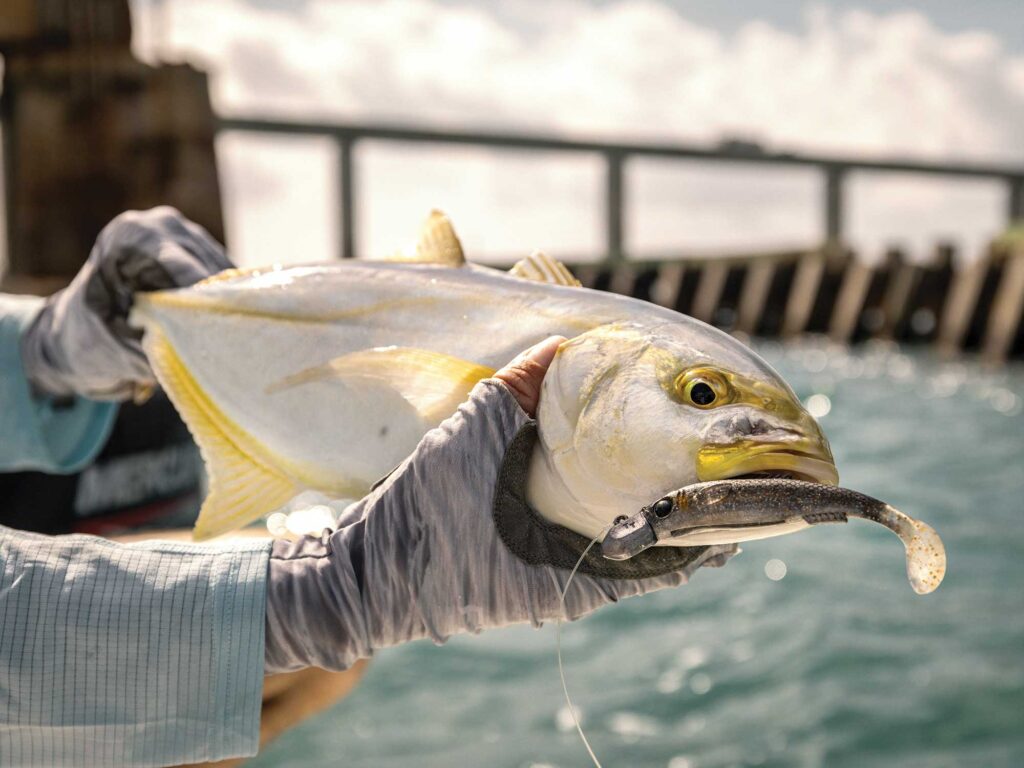
As much gear as they’re losing, though, the guys are having a blast catching a mix of schoolmasters and lanes, plus gag and black grouper. They’re here for action and species they don’t catch regularly, and they’re getting plenty of both.
“Any time you’re jigging and you get to feel that thump, it’s incredibly rewarding. It’s similar to a topwater bite or something,” Benzrihem describes. “I wanted to come to the Keys and just catch stuff that I couldn’t catch at home, especially on really light gear.
“It’s been a riot. I spent $300 at Bass Pro Shops, and I used it all. I guess that’s the sign of a good trip.”
New water, a new flats skiff and still plenty of fish caught. It’s a pattern that most inshore anglers can follow when fishing the Keys, even if the flats and wind aren’t cooperating. Target the creeks and canals. Find structure and current near the bridges, and you’ll find fish to battle all year long.

